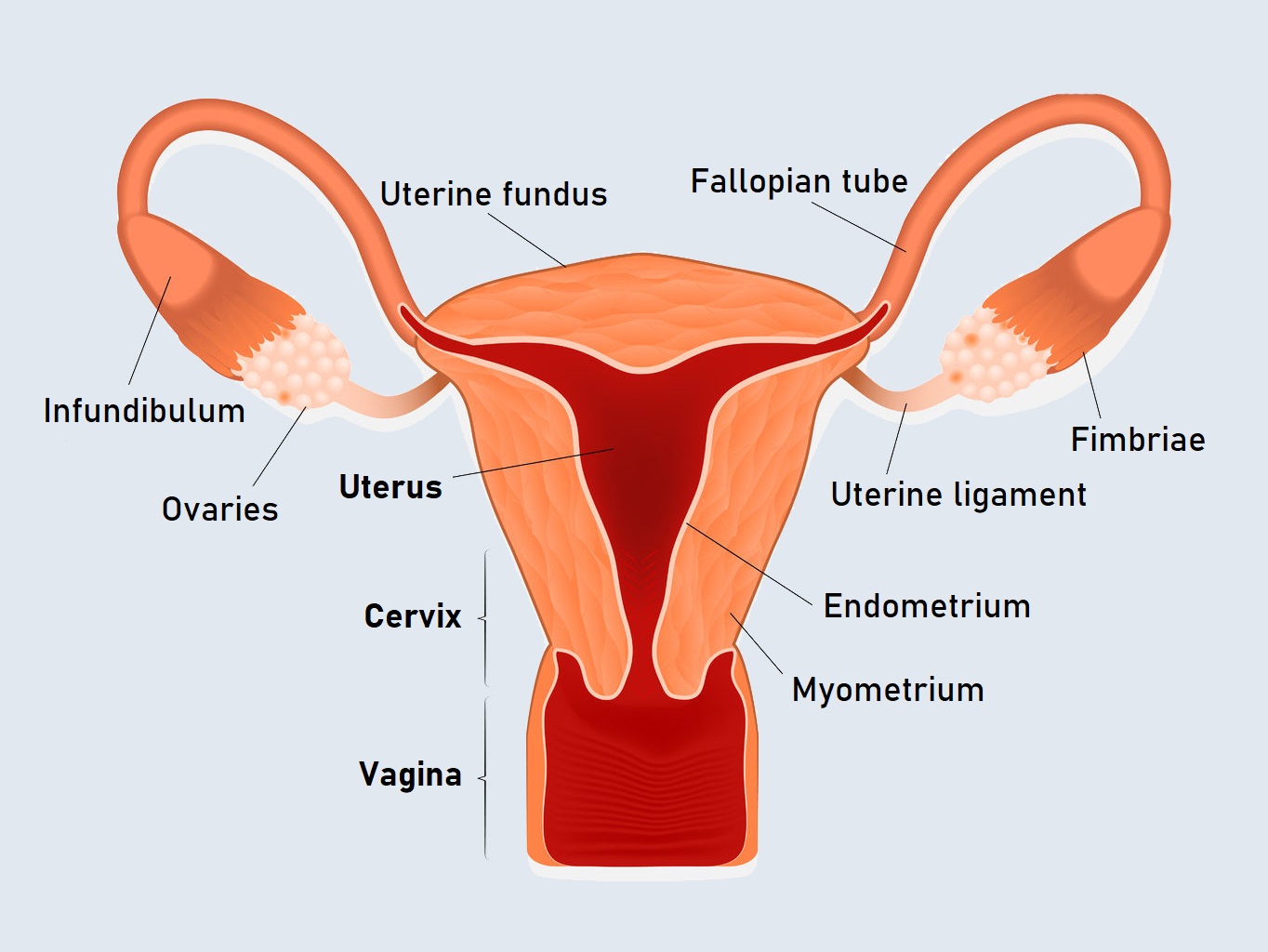Gynaecology
It is recommended to visit a gynaecological clinic not only in case of a complaint, but also for screening. Regular gynaecological screenings are of paramount importance for the preservation of women’s health, the primary purpose of which, is the timely detection of preventative conditions of cancer, in addition to screening for infections and organ lesions.
Gynaecological examinations include the examination of the vulva, vagina, uterus and ovaries, and the cervical screening (cytology). At the patient’s request, the specialist will also perform a physical examination of the breasts to palpate the breasts and the lymph nodes in the armpits.

With what symptoms should you see a gynaecologist?
- In case of bleeding disorders
- In case of symptoms during menstruation (pain, severe abdominal cramps, fainting, irregular cycle)
- Complaints caused by hormonal changes (hair loss, increased hair growth, skin changes, acne, increased weight gain while taking the contraceptive pill, heatwaves, arrhythmias, chronic fatigue during menopause)
- Breast lesions (pain, discharge, palpation of a lump or nodule in the breast, armpit, change in the shape of the breast, permanent retraction of the nipple, change in the skin of the breast)
- If the vulva is itchy, burns, and there are blistering lesions, warts in it, and there is a palpable lump, swelling in the big lips
- If the vagina burns, itches, and the colour, smell and texture of the flow change
- In case of painful sexual intercourse if you feel an unpleasant urge to urinate after the intercourse
- In case of abdominal and pelvic pain of unknown origin, in case of cramps
Laboratory test packages to find out the cause of female complaints
In most cases, in addition to gynaecological examinations, laboratory tests are also needed to find out the cause of women’s problems. Our laboratory test packages that are available at our clinics have been designed to provide effective assistance in both early detection and the exploration of the cause of a complaint:
- Laboratory tests before the use of first contraceptive pill
- NIFTY
- Infertility laboratory test packages
- Women’s health package when planning a family
- Laboratory testing of female sex hormones
- Laboratory testing of female menopause hormone
- Women’s/men’s health screening laboratory test package – under 50 and over 50 years
- Laboratory tests for sexually transmitted diseases (STDs) in case of women with gynaecological sampling
- Laboratory tests for sexually transmitted diseases (STDs) in case of women and men (blood test)

The course of the gynaecological examination
During the gynaecological examination, the gynaecologist first records the medical history in an informal discussion, after which the physical examination takes place. In doing so, the gynaecologist opens up the vagina with a device (called a duck), then performs a vaginal ultrasound examination and takes a sample for cervical screening (cytology).
Depending on the complaint, other screenings may be performed during the investigation, e.g. sampling of the cervix, vaginal secretions for microscopic examination of vaginal secretions. In case of suspicion of tumor or endometriosis, a two-hand examination of the internal female genitalia, i.e. a bimanual examination, which may be performed by the gynecologist on the one hand from the vagina and abdomen and through the rectum, may also be necessary.
What examinations can you expect at the gynaecological clinic?
The following examinations may be performed as part of a gynaecological examination, depending on the complaint:
- Recording of individual and family history
- Gynaecological ultrasound examinations
- vaginal ultrasound
- pregnancy ultrasound in case of prenatal care
- Cervical cancer screening (cytology)
- Vaginal discharge sampling
- Physical breast examination with palpation
- Colposcopy (vaginal endoscopy)

Vaginal ultrasound
Vaginal ultrasound gives an accurate picture of the location, size and structure of the uterus. During the examination, the gynaecologist gently slides the gel-coated probe into the vagina. By moving the head, the entire pelvis becomes visible.
Breast examination
During a palpatory breast examination, the gynaecologist examines the abnormalities around the breast as well as the armpits. Breast palpation is performed by a specialist only at the request of the patient. If you experience a lesion, the gynaecologist recommends an ultrasound or mammography.
Cervical cancer screening
During cervical cancer screening (cytology), the gynaecologist takes a secretion sample (smear) from the surface of the cervix and the front of the cervical canal using a cell sampling device, which is applied to a slide.
The given cell sample is subsequently subjected to a microscopic examination and evaluated by a cytopathologist. Possible pathological conditions can be inferred from changes in the epithelial cells in the smear.
Colposcopy
A colposcope is a light-emitting and magnifying system that is capable of magnifying (usually 5 to 30 times) multiple parts of the body and living tissues.
If the results of the cervical cancer screening show a lesion, the gynaecologist will also perform a colposcopy. During the examination, the vaginal walls supported by the spatula allow the cervix to be seen. The examination itself is painless and takes only a few minutes after the vagina is explored. The epithelial abnormalities become more contrasting and easily visible on the surface of the cervix that is treated with acetic acid.
The role and structure of the uterus
The female reproductive system is very complex. The female organ produces and carries eggs, while at the same time it is able to feed and protect the developing fetus.
The uterus can be divided into three parts: the vagina, cervix, and the uterus itself. In its role, it receives the fertilized egg so that the fetus can develop and then be born around the ninth month. It also nourishes the developing fetus. When the fetus reaches the appropriate level of development, the uterus helps its birth with the contractions of the muscle walls.
The uterus is an inversed pear-shaped organ located in the pelvis. Its walls are largely made up of solid smooth muscle. Its length is 7-8 cm, width is about 5 cm. It weighs 30-120 grams. For women who have already given birth, the size is slightly larger.
The ovary is an endocrine gland. It is almond-sized, and rests until puberty, then begins to produce female gametes, follicle hormones, and corpus luteum hormones. Its operation changes every 28 days or so, and it stops functioning in menopause.

What do you need to know about cervical cancer?
Cervical cancer is the second most common malignancy after breast cancer when it comes to women. It mainly occurs between the ages of 30 and 40, but recently, it has also increasingly affected the younger age group. In Hungary, more than 1 000 diseases are diagnosed every year. Unfortunately, the majority of patients have never been screened before.
Cervical cancer is asymptomatic for a long time, usually causing symptoms rather late. Abnormal bleeding and unusual flow can draw attention to the disease. During screening, even before the onset of complaints, we may find lesions that suggest a precancerous condition or early cancer. Almost one hundred percent of early stage cancer can be cured. Once the disease has developed, the more effective the complex treatment, the earlier it is diagnosed.

